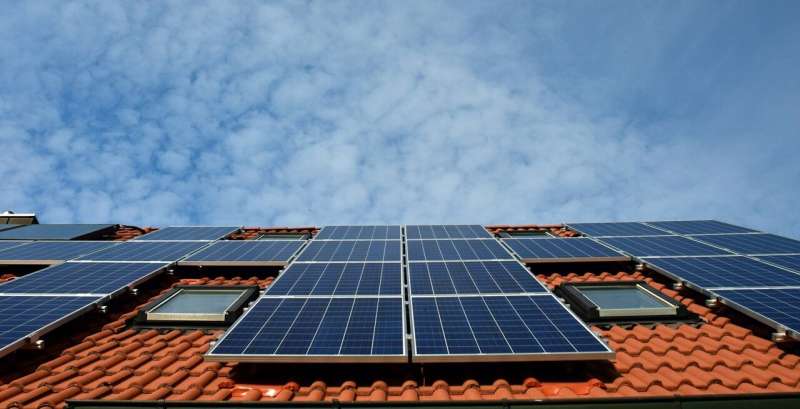by Christina E. Hoicka, Adam J. Regier, Anna Berka, Sara Chitsaz, The Conversation

First Nations across British Columbia have developed renewable electricity projects for decades. Yet they’ve experienced significant barriers to implementing, owning and managing their own electricity supply. That’s because there have been few procurement policies in place that require their involvement.
While municipalities are allowed to own and operate electricity utilities in B.C., First Nations are not. The Declaration on the Rights of Indigenous Peoples Act (DRIPA) in B.C. requires that First Nations are provided with opportunities for economic development without discrimination.
Many First Nations in B.C. view the development of renewable electricity projects on their lands (like hydro power, solar panels, wind turbines and transmission lines) as a way to achieve social, environmental and economic goals that are important to their community.
These goals may include powering buildings in the community, creating economic development and local jobs, earning revenue, improving access to affordable and reliable electricity or using less diesel.
Our new study shares the story of a coalition of First Nations and organizations that advocated for changes to electricity regulations and laws to give Indigenous communities more control to develop renewable electricity projects. Our interviews with knowledge holders from 14 First Nations offer insight into motivations behind their calls for regulatory changes.
The coalition includes the Clean Energy Association of B.C., New Relationship Trust, Pembina Institute, First Nations Power Authority, Nuu-Chah-Nulth Tribal Council, and the First Nations Clean Energy Working Group.
Models for a First Nations power authority
Almost all electricity customers in B.C. are served by BC Hydro, the electric utility owned by the provincial government.
The coalition argues that applying DRIPA to the electricity sector should allow First Nations to form a First Nations power authority. Such an organization would provide them with control over the development of electricity infrastructure that aligns with their values and would also help B.C. meet its greenhouse gas reduction targets.
In the Re-Imagining Social Energy Transitions CoLaboratory (ReSET CoLab) at the University of Victoria, we analyzed regulatory documents from the B.C. Utilities Commission, and advocacy documents and presentations for discussion developed by the coalition.
We identified six proposed First Nations power authority (Indigenous Utility) models:
A capacity building point-of-contact model streamlines the development of renewable electricity projects to sell power to the provincial utility. For example, the First Nations Power Authority in Saskatchewan was formed for this purpose by SaskPower.
This would be the most conformative model. It would provide vital networks and connections to First Nations while allowing BC Hydro and the British Columbia Utilities Commission to maintain full control over the electricity sector.
In the second model, called a “put” contract, a B.C. First Nations Power Authority represents First Nations wishing to develop renewable electricity projects. Whenever the province needs to build new electricity generation projects to meet growing electricity demand, a portion of the new generation is developed by the First Nations authority.
In the third model, First Nations build and operate electricity transmission and distribution lines to allow remote industrial facilities and communities to connect to the electricity grid. This is called “Industrial Interconnection.”
For example, the Wataynikaneyap Power Transmission line in Ontario is a 1,800-kilometer line that provides an electricity grid connection for 17 previously remote nations. Twenty-four First Nations own 51% of the line, while private investors own 49% of the line.
In the fourth model, the B.C. First Nation Power Authority acts as the designated body for various opportunities in the electricity sector, such as the development of electricity transmission, distribution, generation or customer services. This model is referred to as “local or regional ‘ticket’ opportunities.”
Fifth, the First Nation Power Authority develops renewable electricity projects and distributes electricity from these projects to customers as a retailer, or under an agreement through the BC Hydro electricity grid. For example, Nova Scotia Power’s Green Choice program procures renewable electricity from independent power producers to supply to electricity customers.
Sixth, new utility is formed in B.C., owned by First Nations, that owns and operates electricity generation, transmission and distribution services and offers standard customer services in a specific region of B.C. (called a “Regional Vertically-Integrated Power Authority”).
Most of these models would require changes to regulations. The sixth and most transformative model would provide First Nations with full decision-making control over electricity generation, transmission and distribution. It would also give them the ability to sell to customers and require extensive changes in electricity regulation.
Improving living standards
First Nations knowledge-holders told us that a lack of reliable power, high electricity rates, lack of control over projects on their traditional lands and the need for resilience in the face of climate events were motivations for taking electricity planning into their own hands.
They also expressed that varied factors motivate community interest in renewable energy: improving the quality of life for community members; financial independence; mitigating climate change; protecting the environment; reducing diesel use and providing stable and safe power for current and future generations.
First Nations are already seeking to capitalize on the benefits of renewable energy by developing their own projects within the current regulatory system.
Most of those we spoke to see a First Nations power authority in B.C. as a means to provide opportunities for economic development without discrimination—and to achieve self-determination, self-reliance and reconciliation by addressing the root causes of some of the colonial injustices they face by obtaining control over the electricity sector on their lands.
This article is republished from The Conversation under a Creative Commons license. Read the original article.![]()
Citation:
A First Nations power authority could transform electricity generation for Indigenous nations (2025, June 5)
retrieved 5 June 2025
from
This document is subject to copyright. Apart from any fair dealing for the purpose of private study or research, no
part may be reproduced without the written permission. The content is provided for information purposes only.













Leave a comment